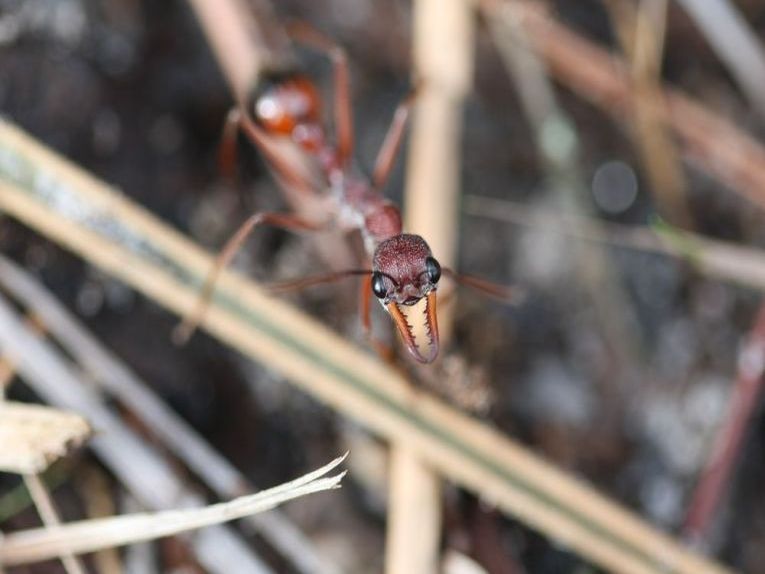Ajay Narendra, Samuel F. Reid, and Chloe A. Raderschall of the Australian National University in Canberra and the Centre for Genomic Regulation in Barcelona in Spain have produced a paper in PLoS ONE on nocturnal navigation.
The jumping jack or Myrmecia pyriformis ants can use a nest-specific tree for hunting. In this case the local eucalyptus is visited early in the morning and in the evening twilight. One small group (10-12% of the workforce) of ants navigate the tree at night, at apparently a very low efficiency. Long pauses are used to orientate the ant and speed is greatly reduced. The path is obviously not marked as well as some ants do, so the research concludes that visual landmarks just can't be located properly as the light fades. The hunt is for other insects, some as big as wasps, which these solitary foragers can easily handle. As well as large jaws, they have a severe stinging bite, also as dangerous to humans as any wasp or bee.
Each individual ant has this typical daily excursion, taking place through a narrow time-window of 40-60 minutes in the evening. The carnivorous group of 10-12% return immediately to the nest in the dark. The others stay out at night gathering honeydew from greenfly and other suckers of sap.
When most ants come out, in the twilight, their large eyes and experience helps them to find the parts of the tree in a few minutes. After twilight, the workers would take several hours to return home, so they remain feeding on honeydew during the night. Right through the year, certain ant groups from the nest retain this apparently inefficient nocturnal habit. The lower temperatures they face then are down to 5oC, at which walking speed is constant. Only above 35°C does the ant begin to walk faster, so ants in this study should not have changed their speed much.
The authors didn't find that the trouble that ants have getting about with their prey after twilight is worth it. They do feed their carnivorous larvae with the wasps and spiders, but further research is needed to discover exactly why these well-sighted ants persist in travelling in the middle of the night with their prey.










